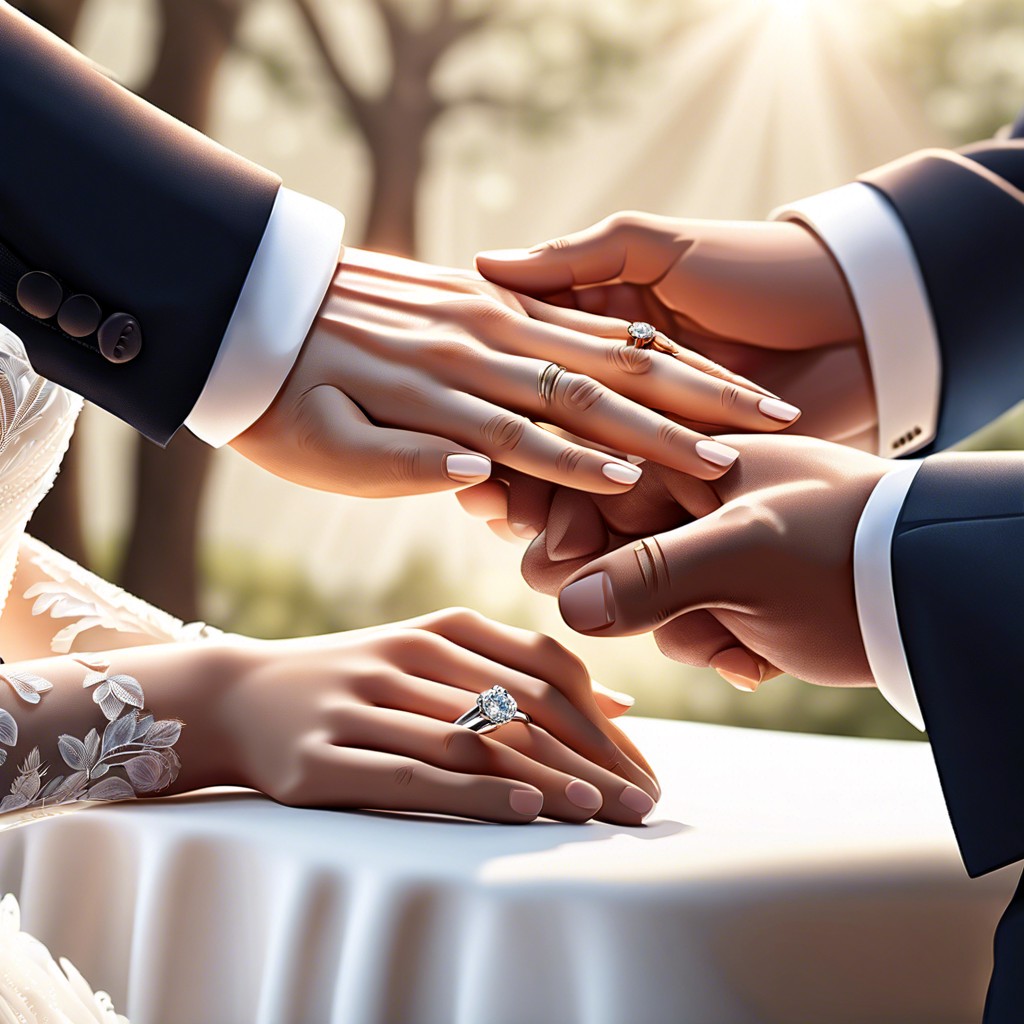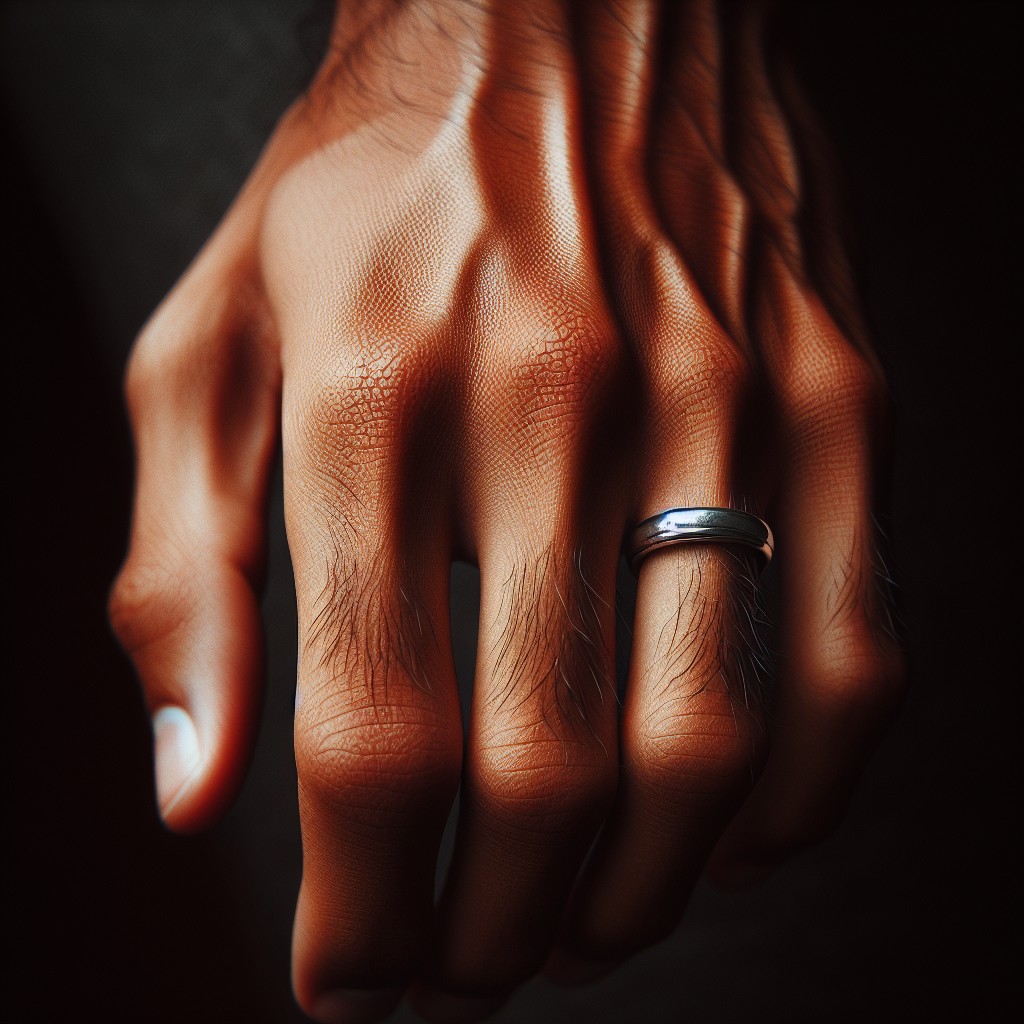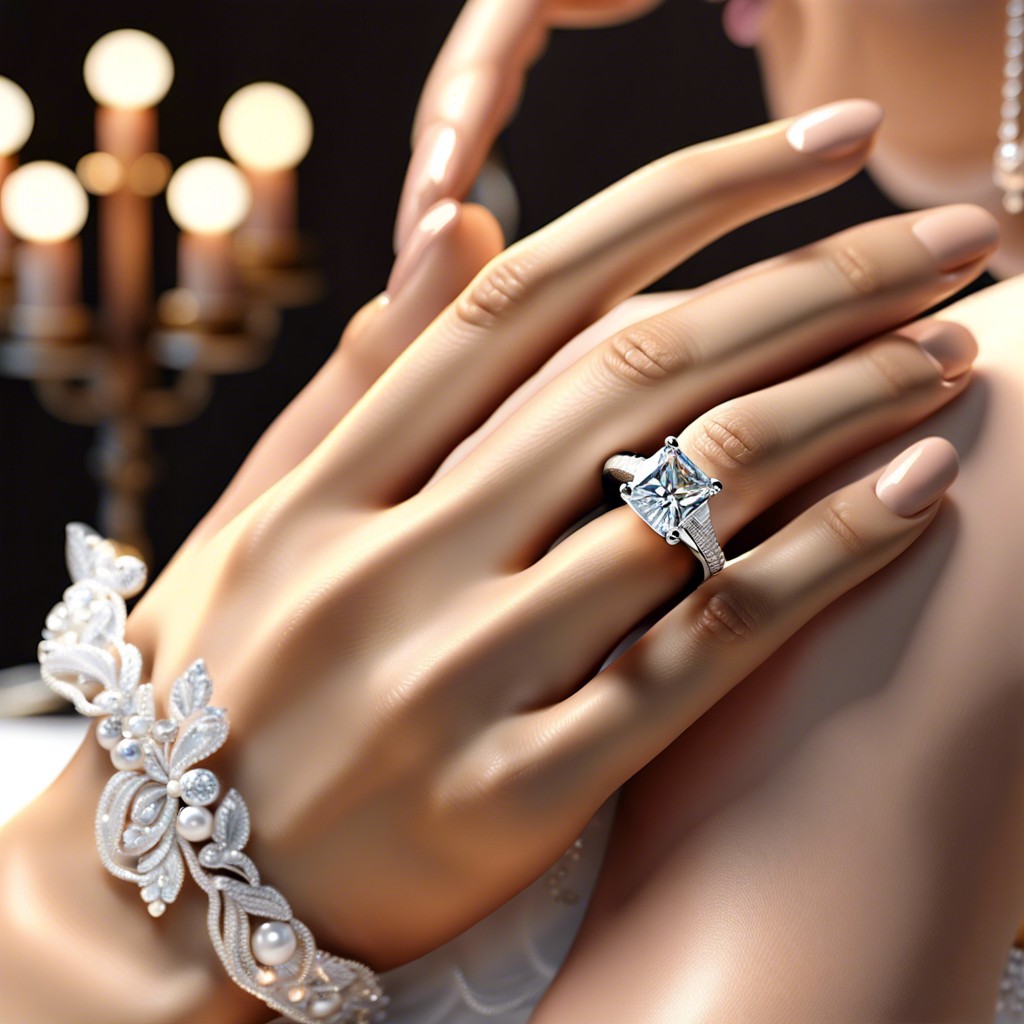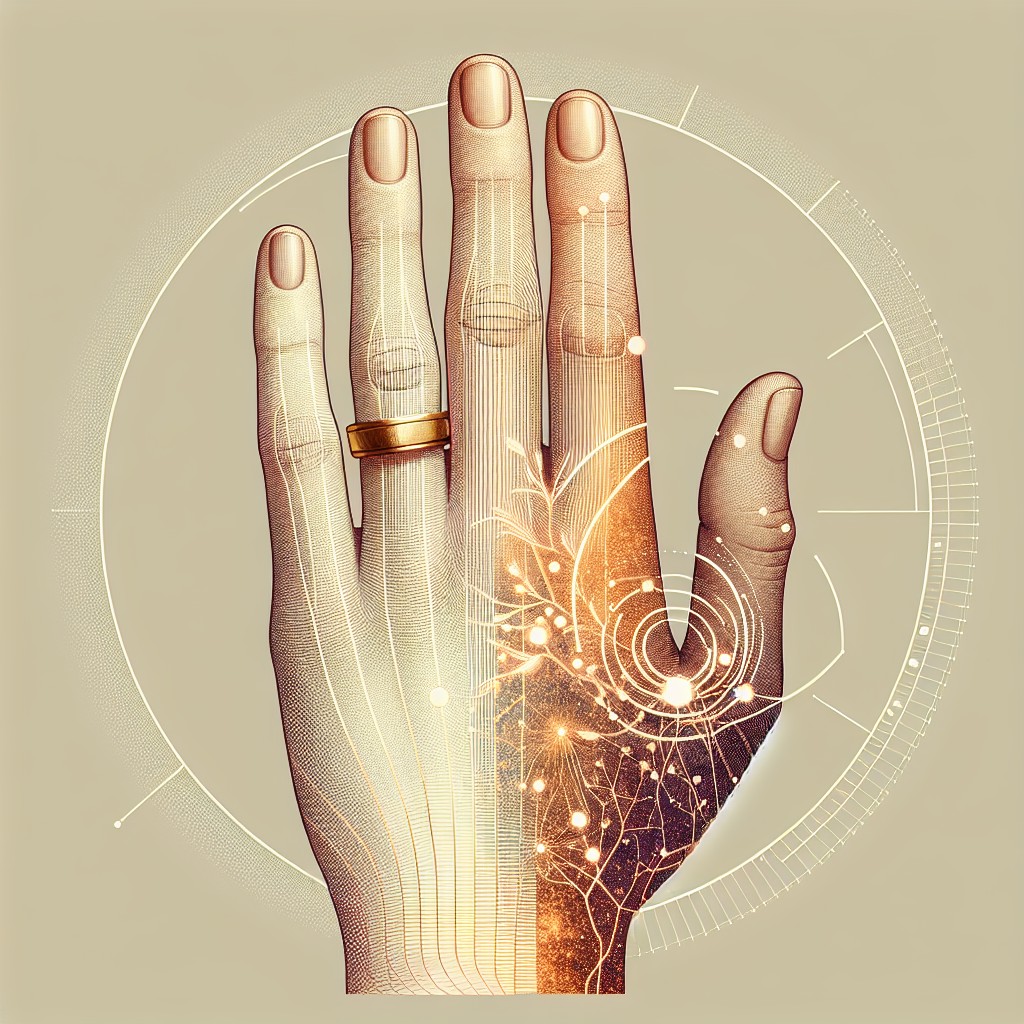Gain clear insights into the cultural significances and global traditions that explain why wedding rings are worn on specific fingers for both males and females.
Key takeaways:
- Wedding rings are traditionally worn on the fourth finger of the left hand.
- Some cultures prefer the right hand for ring-wearing.
- Engagement rings are typically worn on the left hand.
- Contemporary customs allow for personalization and non-traditional placements.
- Cultural differences influence ring-wearing customs and finger selection.
Engagement and Wedding Ring Finger for Both Genders
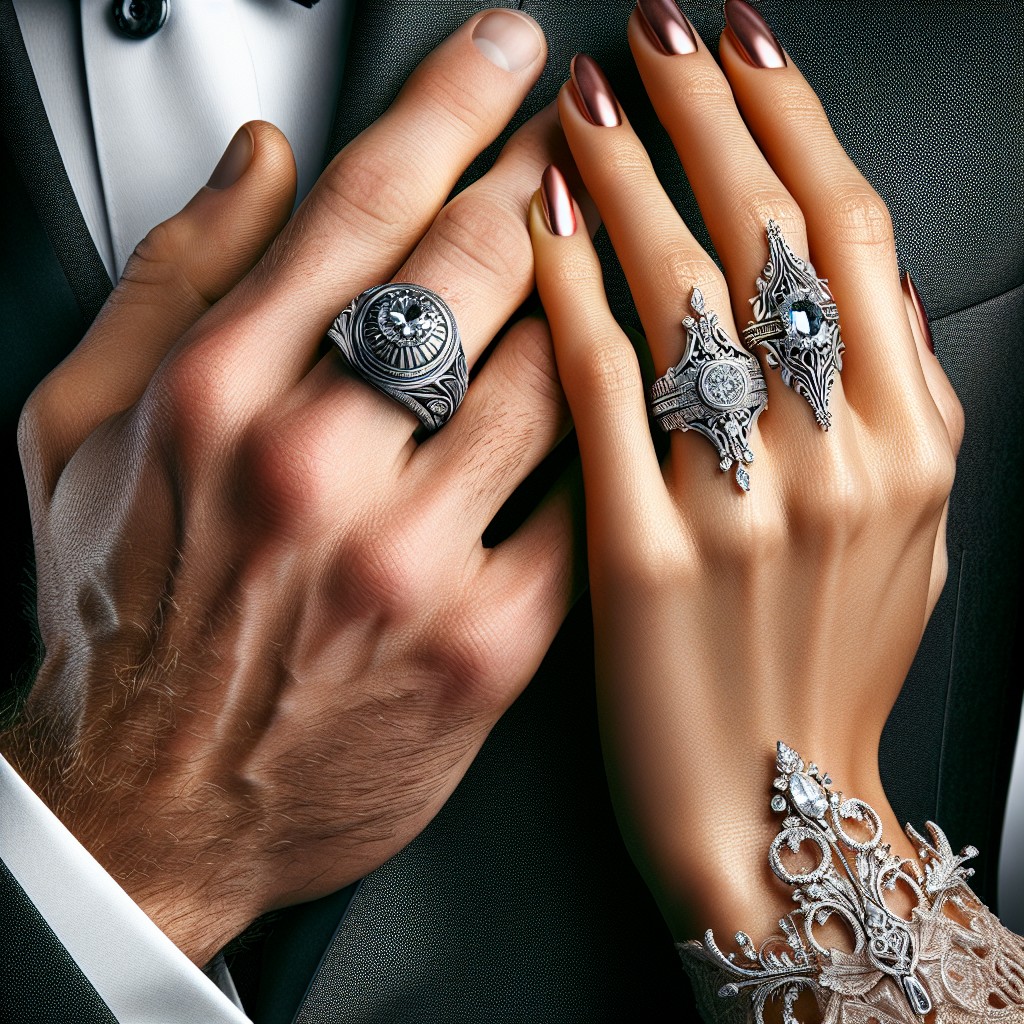
In Western cultures, the custom dictates that both engagement and wedding rings be worn on the left hand’s fourth finger. This practice stems from the belief that this finger houses the “vena amoris,” a vein purported to be directly connected to the heart, symbolizing love and commitment.
For day-to-day wear, engagement rings typically precede the wedding band, and after the ceremony, the wedding ring is placed closest to the heart, with the engagement ring following.
While both men and women generally follow this tradition, it’s not uncommon for men to wear only a wedding band. This tends to be simpler in design compared to the often more ornate engagement rings chosen by women, reflecting personal style and comfort.
In some countries and cultures, however, the opposite hand is favored. For instance, in many Eastern European, South American, and Asian cultures, the right hand serves as the ring-bearing hand. The significance remains the same: a symbol of love and fidelity shared between spouses.
It’s always advisable to respect individual preferences and cultural backgrounds when it comes to the choice of ring finger.
Traditional Vs. Contemporary Ring Wearing Customs
In most Western cultures, tradition dictates that the wedding ring be worn on the fourth finger of the left hand, based on the belief that the “vena amoris,” or vein of love, connects directly to the heart. Conversely, some Eastern European and South American countries often place the wedding ring on the right hand.
As for engagement rings, these are typically worn on the left hand in the United States and Canada but can vary in other countries. In some cultures, once the individual is married, the engagement ring is transferred to the right hand to signify the change in marital status.
Contemporary customs are seeing a shift in these practices, with some choosing to wear their rings on different fingers or hands based on personal preference, comfort, or professional requirements. It’s becoming more common to see men and women opting for less traditional ring placements, such as wearing the ring on a chain around their necks or foregoing rings entirely in favor of tattoos or other symbols of their union.
The evolution of customs ensures that the choice of where to wear a wedding or engagement ring is becoming increasingly diverse and personal.
Significance Behind the Ring Finger Selection
The tradition of wearing the wedding ring on the fourth finger of the left hand can be traced back to ancient times. It was believed that this finger houses the “vena amoris,” or vein of love, which runs directly to the heart, symbolizing love and fidelity. While modern science has shown that all fingers have similar vein structures, the romantic notion persists.
Moreover, many cultures have ascribed deep meaning to this custom. In some Eastern traditions, the ring finger is associated with the sun, representing beauty and creativity, which are attributes often associated with marriage.
In contrast, some Western cultures don’t follow this tradition strictly. For instance, in some European countries, the wedding ring is worn on the right hand, emphasizing the importance of the union over cultural norms.
Additionally, wearing a ring on the traditional ring finger can signify to others that a person is committed, making a clear statement about one’s marital status.
It’s also worth noting that some individuals may choose a different finger due to comfort, occupational safety, or personal preference, showcasing the evolving nature of ring-wearing customs.
Cultural Differences in Ring Placement
Engagement and wedding ring practices vary globally, reflecting diverse traditions and beliefs. In many Western cultures, the left hand’s fourth finger is customary for ring placement, believed to connect to the heart via the “vein of love.” However, in several Eastern European and South American countries, rings are traditionally worn on the right hand.
In some cultures, the rings’ position may switch post-wedding, moving from the right hand to the left, or vice versa, symbolizing the transition from engagement to marriage. For instance, in Greece and Portugal, engagement rings are initially worn on the left but moved to the right after the wedding ceremony.
Orthodox Christians in Eastern Europe use the right hand for their wedding bands to align with positive connotations; the right side is typically associated with virtue and honor.
Indian weddings often feature the groom wearing a ring on the right hand while the bride wears hers on the left, acknowledging gender differences in their cultural rituals.
Jewish tradition initially places the wedding band on the bride’s index finger, signifying the direct connection to the heart; the ring can later be moved to the ring finger if desired.
Understanding these customs allows couples to pay homage to their heritage or combine elements from various cultures to create a personalized wedding ring experience.
Etiquette for Wearing Engagement and Wedding Rings
When you exchange your vows, the engagement ring may be temporarily moved to the right hand to allow the wedding band to be placed on the left hand first, following the tradition of the wedding band being closer to the heart. After the ceremony, the engagement ring is often placed back on top of the wedding band.
Some prefer to weld their engagement and wedding rings together, creating a single, wearable piece. This ensures the rings do not separate and makes for a comfortable, consistent fit.
Wearing the rings on different hands can also be a personal choice or a nod to cultural practices. For example, in some European countries, it’s customary to wear the wedding ring on the right hand.
Non-traditional ring choices also impact etiquette, where couples may opt for tattooed rings, different fingers, or no rings at all, focusing on the commitment rather than the symbol.
Remember, respectful inquiries about unfamiliar customs can foster understanding and show appreciation for diverse traditions.
FAQ
Which finger is the wedding ring finger for a woman?
The wedding ring is typically worn on the fourth finger of the left hand by women.
Why does my husband wear his wedding ring on his right hand?
Your husband wears his wedding ring on his right hand because, following ancient Roman tradition, the right hand is considered a symbol of trust, loyalty, and honor which are significant elements in a marriage.
Can I wear wedding ring on right hand?
Yes, you can wear your wedding ring on your right hand based on your personal preference and practicality with your other jewellery.
Is the engagement ring on the left or right hand?
The engagement ring is traditionally worn on the fourth finger of the left hand in many Western countries.
Should both spouses wear their wedding rings on the same hand?
There is no strict rule that both spouses must wear their wedding rings on the same hand, as it can vary based on cultural, personal, or regional preferences.
Why might some couples choose to wear their wedding rings on their left hands?
Couples often choose to wear their wedding rings on their left hands because of the longstanding tradition that suggests a vein in the left ring finger connects directly to the heart.
What are the cultural influences on which hand the wedding ring is worn?
The hand on which the wedding ring is worn primarily depends on the cultural, religious, and personal beliefs of the individual couples, with some traditions favoring the left hand and others the right.
Keep reading:
